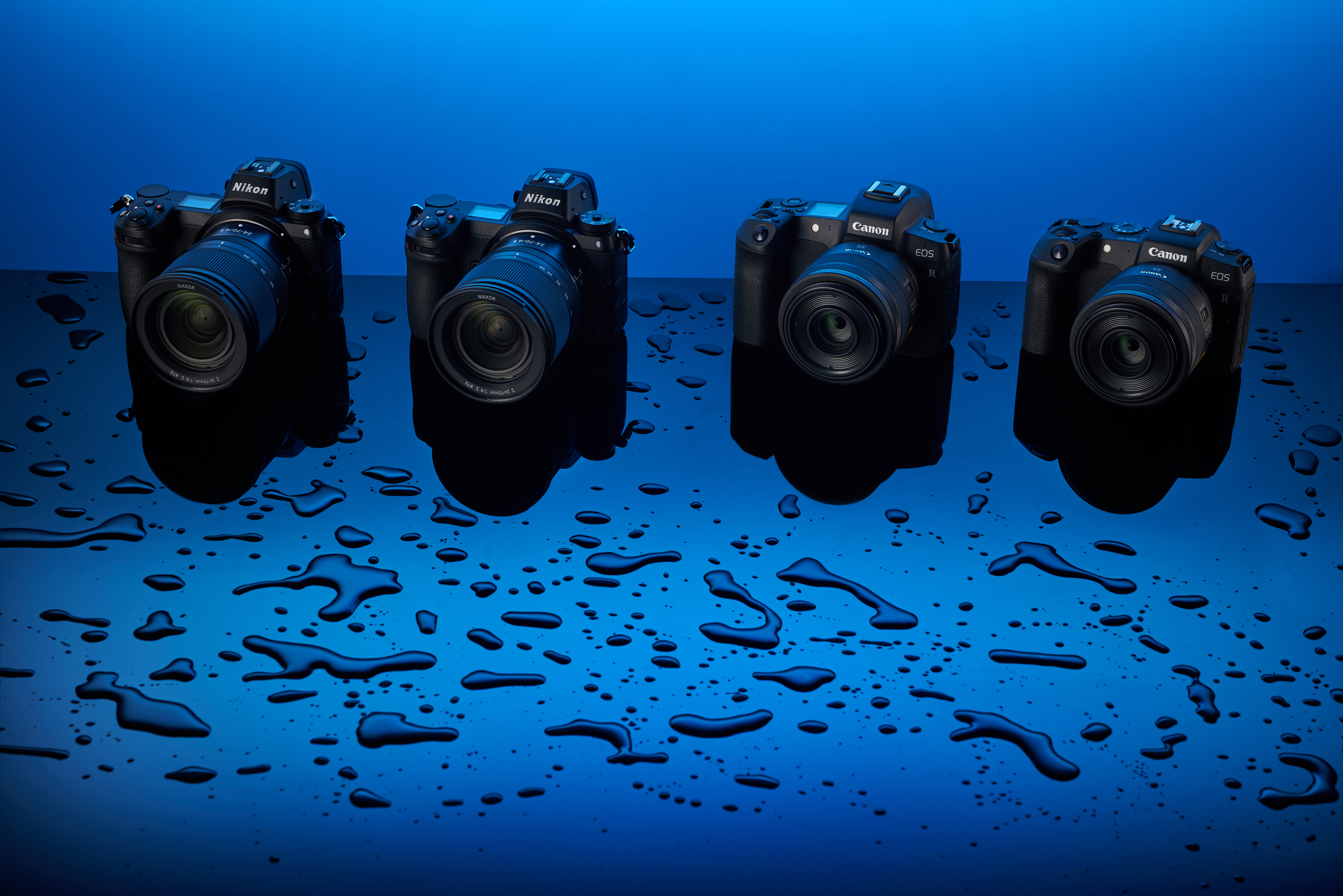What is a mirrorless camera?
The photographic industry is going mirrorless, but what is a mirrorless camera and how is it different to a DSLR?
Watch video: What is a mirrorless camera?
Mirrorless cameras are all the rage these days, with “full-frame mirrorless” and even “mirrorless medium format” being buzzwords du jour. But what exactly is a mirrorless camera, and what makes it different from a DSLR?
• See the Digital Camera World A-Z Dictionary of photography jargon
As you’ve probably guessed, the main difference is that a mirrorless camera has no reflex mirror. In a DSLR, a physical mirror is used to reflect an image up to the optical viewfinder; to capture a photograph, the mirror flips out of the way to allow light to hit the image sensor.
With a mirrorless camera, though, the sensor is always exposed to light, enabling it to capture a Live View image without the need for a mirror or optical viewfinder. Instead, this literal 'live view' is displayed on the rear LCD screen or through an electronic viewfinder – which is a miniature LCD or OLED monitor.
Unlike an optical viewfinder, Live View gives a 'live' preview of the image exactly as it will be exposed, enabling you to see how settings like ISO, aperture and shutter speed will affect your final image before you've even taken it.
• The best mirrorless cameras in 2019

The lack of a physical mirror to clunk out of the way means that mirrorless cameras can shoot absolutely silently, making them perfect for weddings or other events where noisy shutters are intrusive and unwelcome.
Removing the mirror also reduces the flange back distance – meaning that the back of a lens element can be much closer to the image sensor. Manufacturers can therefore produce more exotic and high-performance lenses, but it also means that you can adapt a wide variety of old film and lenses – as well as DSLR and mirrorless lenses from other systems.
Many mirrorless cameras feature in-body image stabilization. This uses magnetic fields to stabilize the sensor and counteract movement or camera shake. It’s common for mirrorless cameras to deliver five shutter stops of image stabilization – ideal for wobbly hands, shooting in low light, or using long lenses.
And because they dispense with the clunky mirror mechanism and optical viewfinder, mirrorless cameras can be a fraction of the size and weight of their DSLR counterparts, giving fantastic image quality in bodies as small as compact cameras.

Wait a minute, though – compact cameras don’t have mirrors or optical viewfinders either. Aren’t they mirrorless cameras as well?
Well, yes – everything from a point-and-shoot to a rangefinder and even your smartphone is technically a mirrorless camera. However, when discussing mirrorless cameras, we’re generally referring to digital interchangeable lens cameras.
Because of their many advantages, mirrorless cameras are rapidly replacing DSLRs as the technology of choice for consumers and manufacturers alike. They say that less is more, and that’s definitely true when it comes to mirrorless.
More videos:
What is depth of field in photography?
What is aperture on a camera?
5 tips for choosing and using… polarizing filters
Get the Digital Camera World Newsletter
The best camera deals, reviews, product advice, and unmissable photography news, direct to your inbox!

James has 22 years experience as a journalist, serving as editor of Digital Camera World for 6 of them. He started working in the photography industry in 2014, product testing and shooting ad campaigns for Olympus, as well as clients like Aston Martin Racing, Elinchrom and L'Oréal. An Olympus / OM System, Canon and Hasselblad shooter, he has a wealth of knowledge on cameras of all makes – and he loves instant cameras, too.
